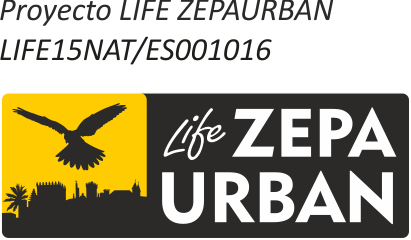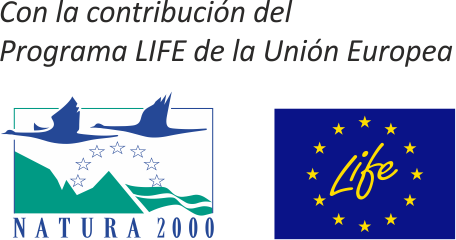This action is based on the analysis of the actions D1 (Monitoring the impact of the conservation actions of the project on lesser kestrel) and D2 (Monitoring of socio-economic impact of the project) in which the parameters that will be used as indicators in the project have been clearly detailed, and how, when and by whom these parameters will be measured during the life of the project, to ensure compliance with the table of indictors that is required by the European Commission, from the start, during, at the end and five years after its completion.
Indicator parameters of the project:
A.- Indicators related to the focus species in the project (Falco naumanni), in this case the number of breeding pairs.
It is hoped that at the end of the project, in relation to current European and Extremaduran data, the species will have shown a notable improvement in the number of breeding pairs in the urban SPAs in the project, indeed reaching Favourable Conservation Status, that persists for five years from the end of the project, within a stable or improving population trend.
B.- Indicators relating to the socio-economic impact of the project:
To measure the level of attainment of the socio-economic objectives of the project, we will work with the following tools:
1. Web platform: Throughout the project the number of visits to the web will be monitored using Google Analytics that will enable the number of people visiting the site to be known, an estimate of where they have connected from, the software used, downloads carried out and indeed which sections of the web are most visited. All of this will permit a reorientation if required of the webpage, making detailed reports on this, under the perspective of what content is most interesting and durable, right up to five years after the end of the project.
2. Application (App) for the tourist product of the project: differentiated metrics will be used to extract the statistics of use (number of downloads and installations) and diffusion (geographical information of its users), depending on the existing platforms that will publish the app (Apple Store or Google Play), both at the end of the project as well as five years after its end.
3. Number of people working in tourism linked to the tourist product of the lesser kestrel measured on the register of partners that the General Directorate of Tourism will hold for the project and at five years following its end.
Information on the indicators and results obtained will be sent periodically, always with the mandatory reports, to the European Commission (progress report, mid-term and final report of the project).
Responsible for Implementation: General Directorate of the Environment.

